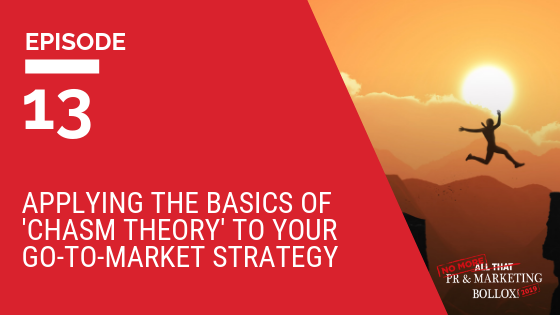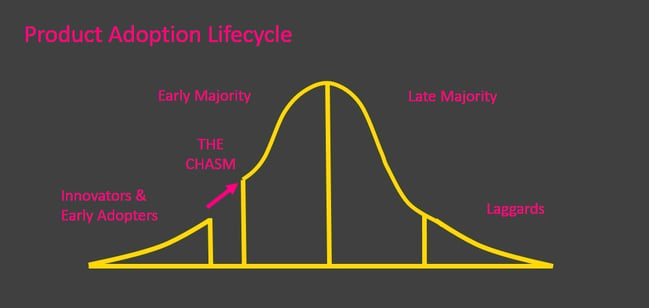
In this week’s video, the author and curator, Bob Dearsley, explains go-to-market strategies and how businesses should go about developing a long-term sales strategy that allows them to move past the “low-hanging fruit”, cross “the chasm” and sell to a wider marketplace.
There’s a simple truth about the B2B marketplace that too often goes unacknowledged: it’s unlikely that your product is going to fly off the shelves on its own. Unlike the consumer marketplace, the B2B world requires targeted selling and reaching the right initial prospects in order to gain traction. Once that traction is gained, sheer momentum will help to propel you forward.
Your go-to-market strategy
The greatest difficulty that any small company faces in getting into a new market and finding success with its product and services is misunderstanding the nature of the sales process that begins on day one. You may start off with the best intent to sell widely, but by definition the early sales process is erratic and somewhat unpredictable. While this period is somewhat necessary in answering the very fundamental question of “Can this be sold?” you need to progress quickly past that point.
Crossing the Chasm
The far left of the adoption curve—outlined by Geoffrey Moore in his very excellent book “Crossing the Chasm” —is where the “innovators” lie. Americans might refer to these people as the “low hanging fruit,” or in other words, the people that are most likely to be interested in your new product or service when no-one else is. These kinds of people or companies seek competitive advantage in the marketplace and thus are interested in hearing about your latest product or service specifically because no one else is using it yet. So indeed, your first duty on the first day of sales is quite simple: run around and try to find these people to sell to. In fact, on the first day of sales, it’s not really important whether they buy it or whether your give it to them, the important thing is that you need customers who will say they are customers.

That may seem straightforward, however the peril, of course, lies in mistaking this method as a sales strategy or as a longer term plan. Remember, there is only so much low hanging fruit in the marketplace. The companies that fail are the ones who assume they can run around selling all over the place without ever creating a systematic strategy for penetrating the marketplace. They have some initial sales, and then find themselves wondering why their leads peter out so quickly. The reason is that they’ve done lots of running around leading to erratic sales, while doing little to create any momentum in an individual market.
Who are you selling to?
Creating a long-term sales strategy involves paying close attention to just who you are selling to. Once you’ve got some sales in your bag from innovators and established that your product is, in fact, saleable, more questions follow. First, you must ask: What’s the commonality among the people you are selling to? Are you solving a problem that occurs in just one industry or vertical? Or are you solving a problem that’s specific to a particular job function and can be applied horizontally across different industries or markets? Answering those questions may mean you need to map and analyse your sales patterns and look for “clusters.”
Check out the video below for more information on go-to market strategies and "crossing the chasm".
Solving problems
Remember that successful companies aren’t just the ones that manage to sell a product, but rather ones that communicate to clients and prospects that they can take away a problem no-one else has solved. You must know where the problem is occurring—and who usually has to deal with it—before you communicate that you can solve it.
The start-up market is awash with companies with neat new products that are searching for a real business problem that they can solve. If you find one and solve it, your company’s future will be a lot more certain.
Once you determine if you need to remain in one vertical or appeal to one job function horizontally across verticals, your job becomes slightly easier. People naturally want reassurance that they’re not the only person that’s bought this. While you may not be able to tell an IT director in an automotive industry that you’ve sold to another automotive company before, you can tell him that you’ve solved a similar problem for an IT director in the manufacturing sector (and can offer references and testimonials to boot). The key is appreciating the similarities. And when you’ve done that, you have the potential to create a cascading effect across different industries. At this point you are on your way to crossing the chasm and being a success!
Closing tip: Figure out whose problem you are solving—and craft a sales strategy around them.
N.B. Do yourself a favour and read Geoffrey Moore! His pointers and analysis of the product adoption lifecycle is as valid today as when he published it 25 years ago!



Submit a Comment